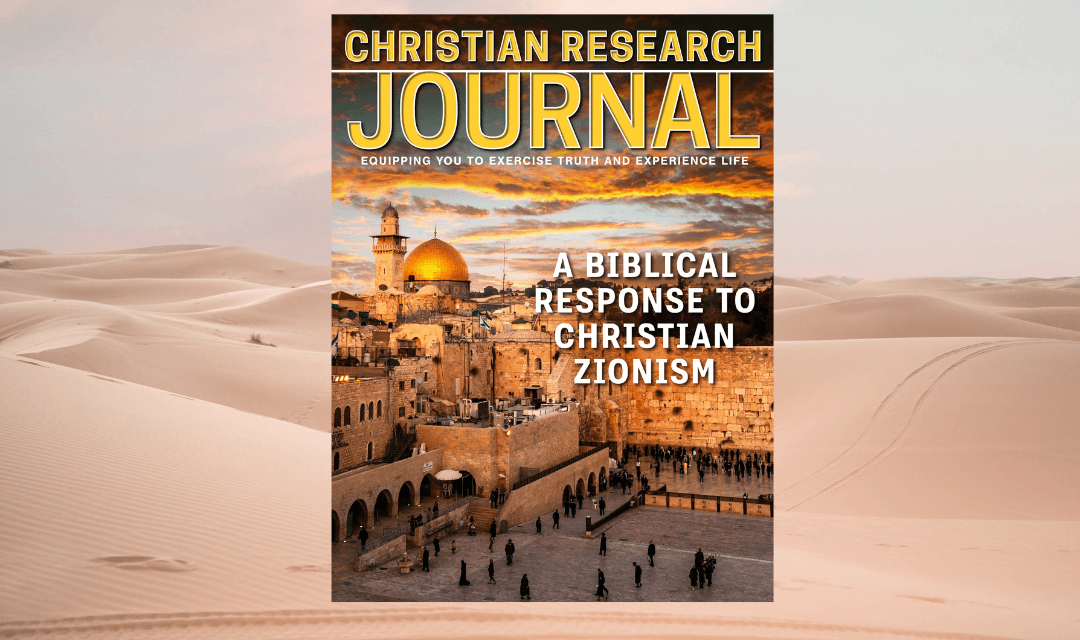For an updated Special Print Issue of the CHRISTIAN RESEARCH JOURNAL, ‘A Biblical Response to Christian Zionism’ click here.
In addition to the cover article, “A Biblical Response to Christian Zionism” this special edition of the Journal contains
several “companion” articles as well:
“What Is Replacement Theology?”
“Is the Pre-tribulational Rapture Theory Biblical?”
“Who or What Is the Great Prostitute of Revelation 17?”
“What about the Millennium?”









